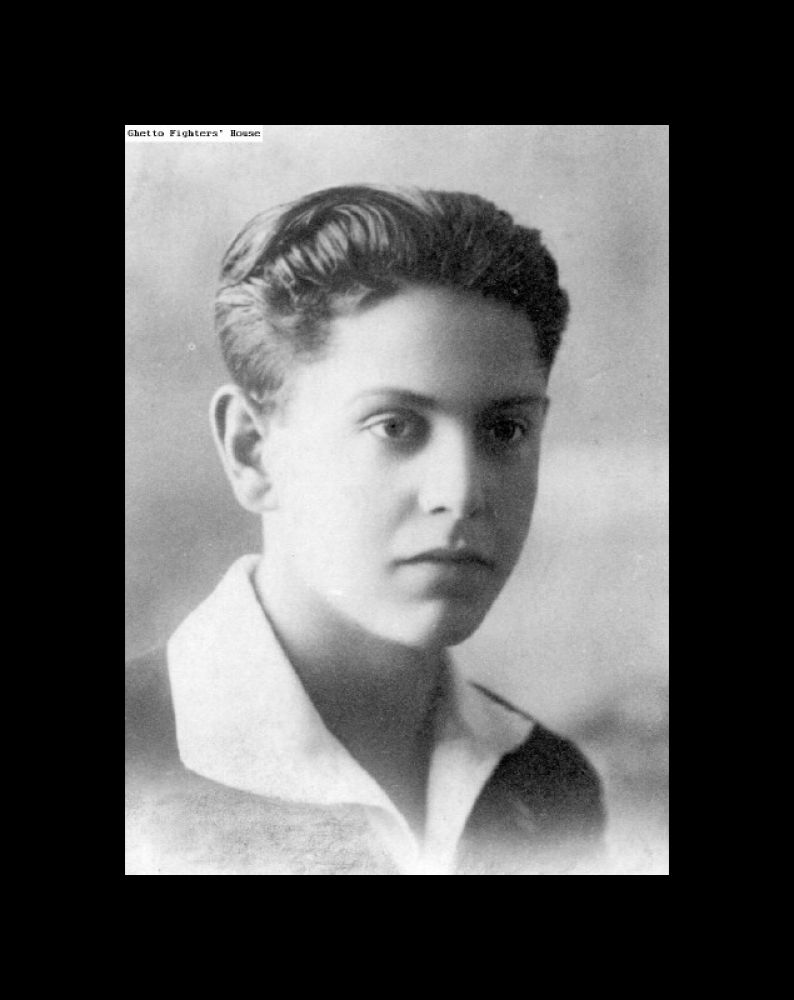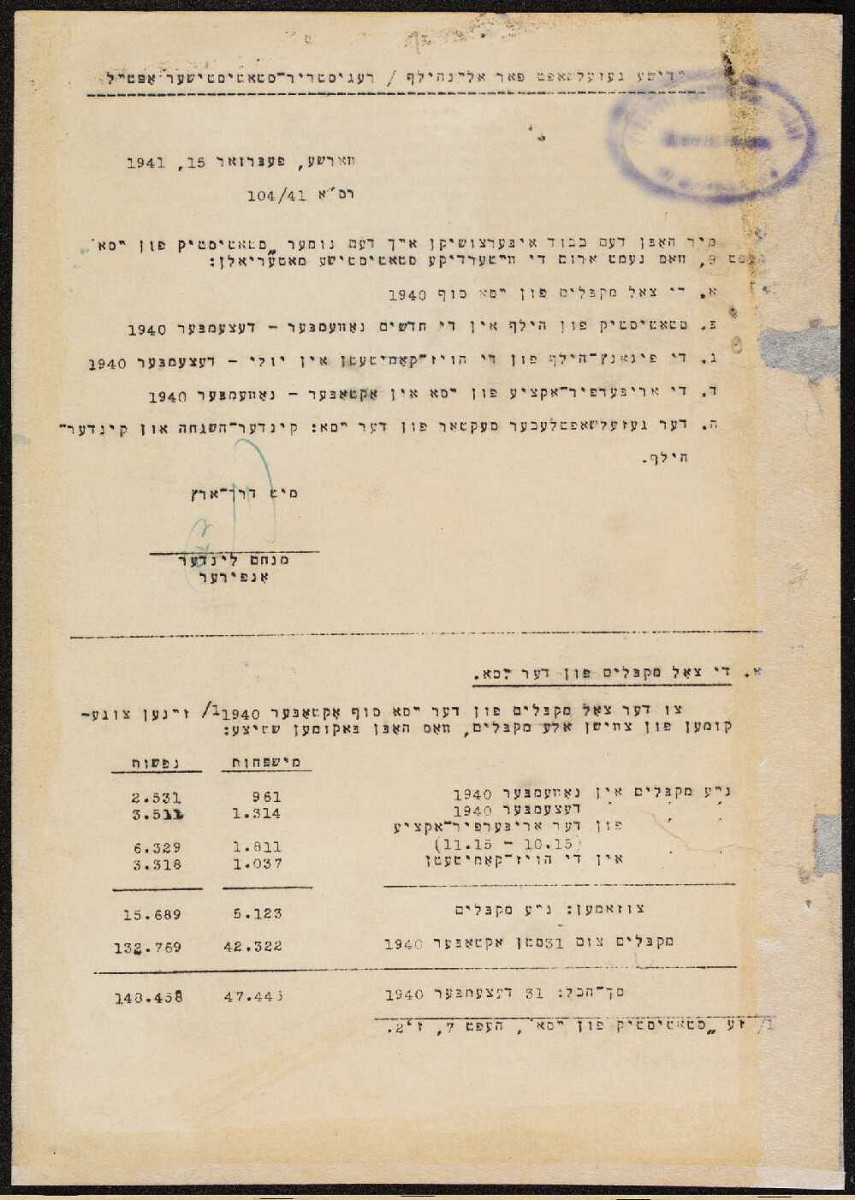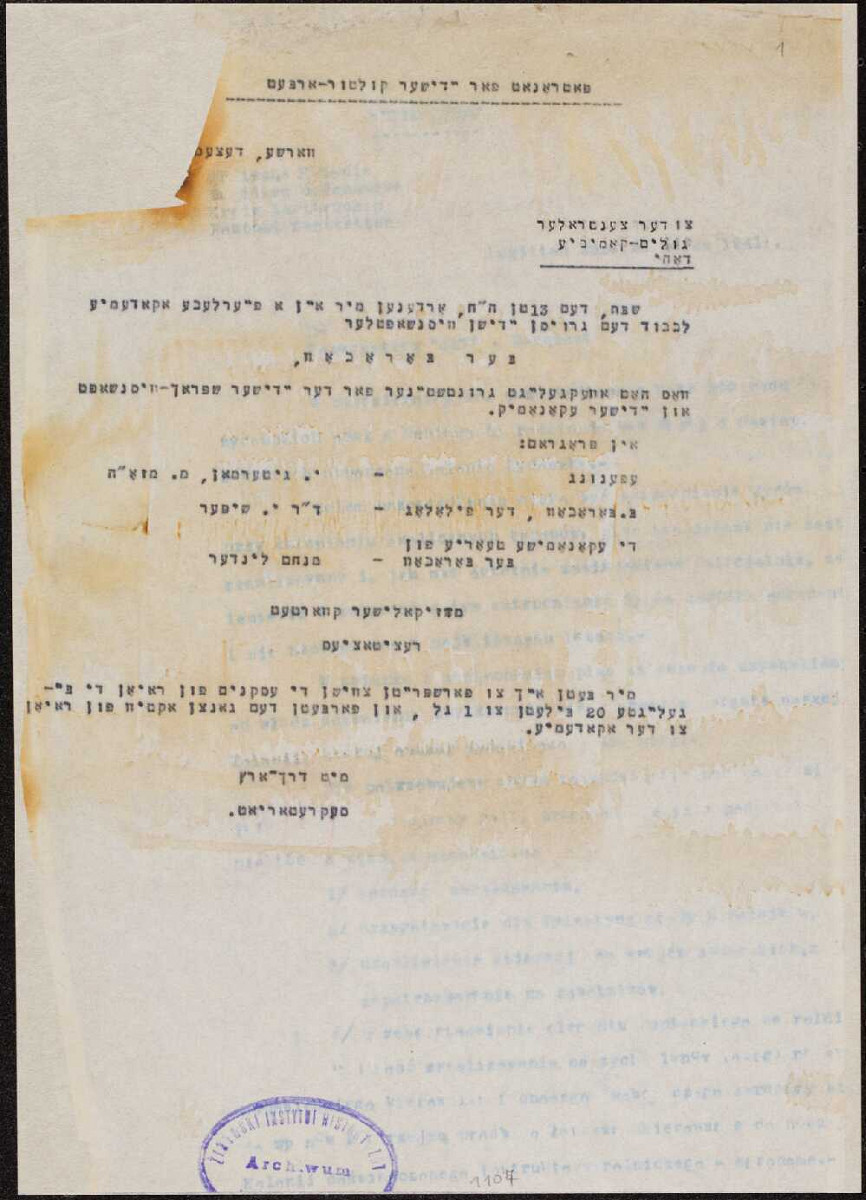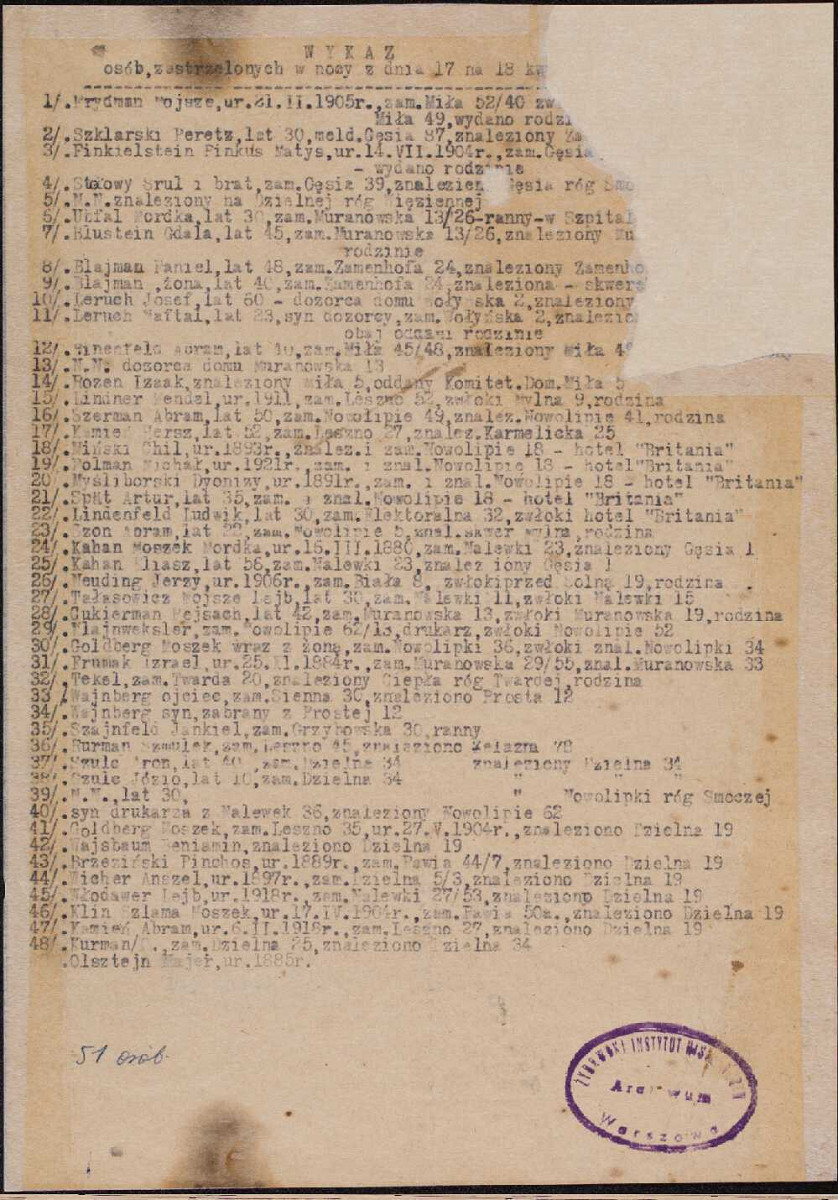- News
- Events
- Oneg Shabbat
- Collections
- Research
- Exhibitions
- Education
- Publishing Department
- Genealogy
- About the Institute
- Bookstore


Photo: courtesy of Ghetto Fighters' House, Israel
Menachem Linder was born in 1911 in Snyatin (today Ukraine). He completed economic studies at teh Jan Kazimierz University in Lviv. His specializations were demographics and statistics, which he used to analyse the social and economic situation of Jews for the statistical and economic section of the YIVO Institute in Vilnius, and later at the Warsaw Ghetto.
Ringelblum wrote that he was discovered during his studies by the CEKABE society. The organization, led by Icchak Giterman, head of Joint, had launched a section dedicated to economics and science. In 1936, they announced a competition – „A monograph of a town”, in which Linder won the first award. He became a doctoral candidate at the Jewish Scientific Institute in Vilnius, where, during two years of his stay, he became saturated with the atmosphere of Vilnius, and became a Vilnian forever. His fame reached Warsaw, where he was nominated to the position of the secretary of the Warsaw branch of YIVO, directed by the famous economist, Jakub Leszczyński. He became an editor of „Jidisze Ekonomik” (The Jewish Economics), the main economics-related magazine of the YIVO. For a certain period of time, he also was a secretary of the Historical Commission of Jews in Poland, co-founded by Emanuel Ringelblum. He excelled at organizational skills. Together with his friends (...) he created an academic atmosphere in Warsaw; he helped created academic courses which were an initial stage of an actual university.

In the Warsaw Ghetto, Linder was active in the Jewish Social Self-Help, where he managed the statistics department (Registration Department) responsible for the registry of the JSSH clients. Ringelblum wrote: The Registration Department of the JSSH has developed into a serious scientific institution, which published extensive and interesting reports, full of rich statistical material – it all went far beyond social care only. Comrade Linder wasn’t preoccupied with science for science itself. As a devoted Socialist, he applied science to his work towards everyday social aid.
He donated his statistical reports made of the JSSH to the Ringelblum Archive. For Oneg Shabbat, he was researching daily budgets of Jewish families and the mortality of the Ghetto inhabitants, including refugees. He was also researching home committees, which functioned, to a large extent, as aid organizations. He was supposed to prepare the economic and statistical part of the research project „Two and a half years of war” (together with Jerzy Winkler and others). Menachem was beyond happy because of this complex academic work ahead of him, wrote Ringelblum.
He founded the YIKOR (Yiddishe Kultur Organizatsye), an underground society popularizing Yiddish language and culture, functioning since December 1940. He organized lectures, presentations, literary events. Some of them took place in the same building which is now the home of the Jewish Historical Institute and the Ringelblum Archive.

The YIKOR was defending the right to use the Jewish language in public life. Ringelblum recalled that Linder, „in love with the Jewish language, cared also for finding new words for the wartime lexicon, such as golim – forced refugees, alejnhilf – self-help and others...
Since his youngest days, he had also been writing a diary, unfortunately not donated to the Archive.
Ringelblum wrote about him: As an enthusiast with an imagination, young Linder didn’t believe he could survive the war. He has premonitions about his death, he was certain he wouldn’t stay alive. Several hours before his death, together with his wife, a young Vilnian educated in secular Jewish schools, they were reading the Psalms in Jehojosz’s translation. Ringelblum’s wife advised him not to sleep at home – they were afraid of possible revenge from the Germans because of killing one of them, but he decided these concerns were exaggerated. He was murdered at night, on 17/18 April 1942, during the April massacre – mass killings of people linked to the resistance by Gestapo. Jehoszua Perle wrote that On nearly every street, someone shot would lay like a dead dog. [1]
Ringelblum: About half past eleven at night, comrade Linder was visited by Gestapo officers, and interrogated about his research. They behaved in a polite and gentlemanly way. Eventually, they took him with them in a car to Mylna street. Other Gestapo agents who were waiting there told comrade Linder to go ahead. They lit light onto him and shot him in the head. For several hours, Menachem was curling up in pain on cold cobblestones, in the dark of the night, alone, he was dying until the morning (…) In the courtyard of the 52 Leszno street, where Linder lived, a quiet, but very expressive demonstration took place. Several hundred friends and comrades came to pay tribute to young Menachem. A small group of several dozen people manages to sneak outside to the Jewish cemetery, which was located outside of the ghetto walls at that time already.
Menachem Linder’s grave is located at the Jewish cemetery in Warsaw.

Footnotes:
[1] The Ringelblum Archive, Utwory literackie z getta warszawskiego, tom 26, ed. Agnieszka Żółkiewska, Marek Tuszewicki, Warszawa 2017, p.524.
The others quotes come from the Emanuel Ringelblum’s notes about Menachem Linder [in:] The Ringelblum Archive, Pisma Emanuela Ringelbluma z bunkra, Vol 29a, ed. Eleonora Bergman, Tadeusz Epsztein, Magdalena Siek, Warszawa 2018, p.185-189.